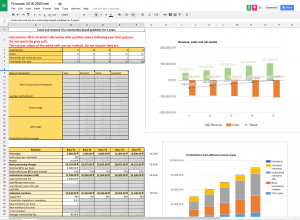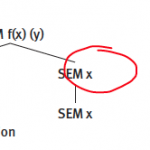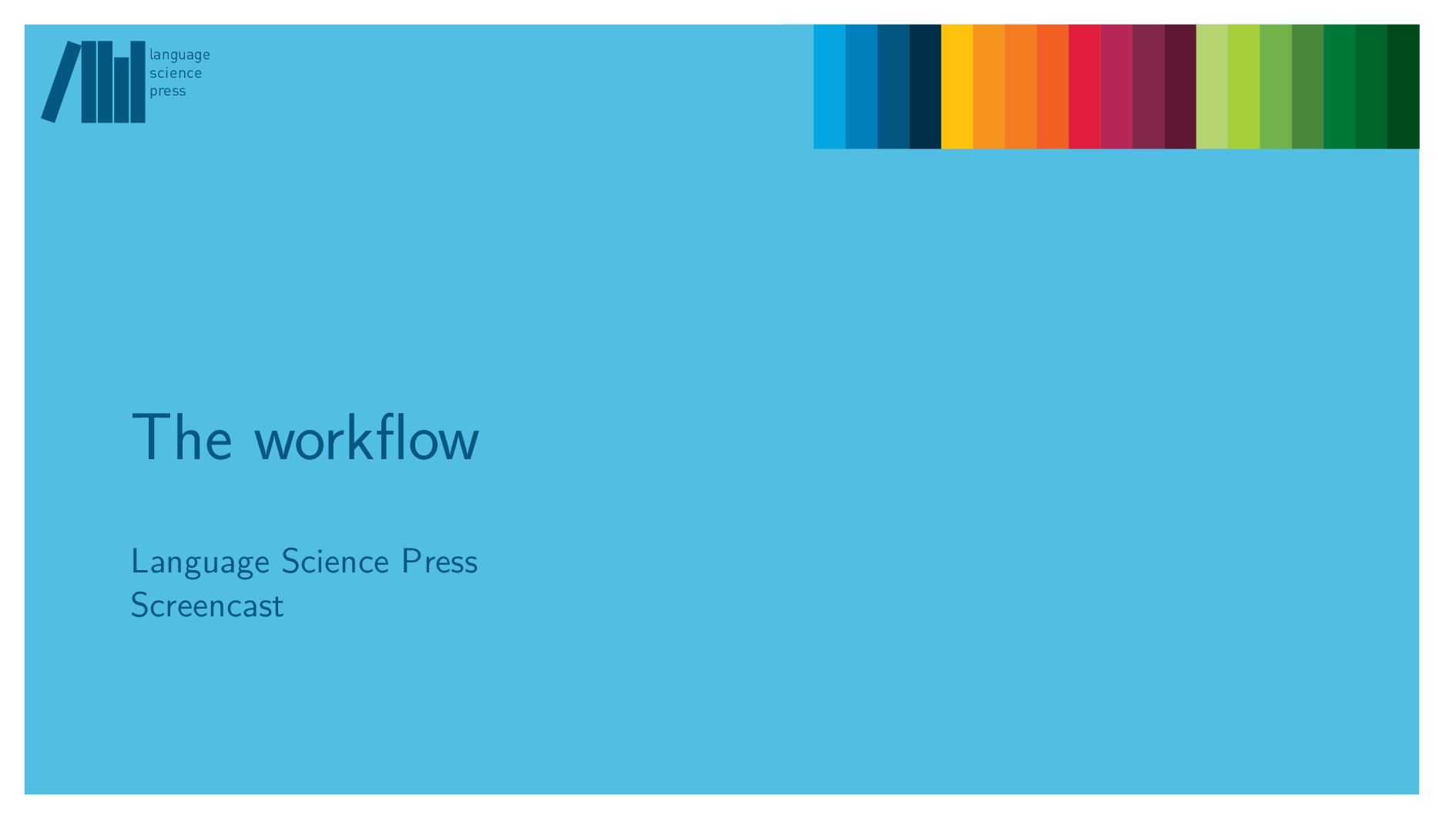Many of our books contains images and graphics. These serve a variety of purposes (maps, photographs, charts). Very often, the images provided by the authors during the initial submission cannot be used. This blog post will shed light on some of the common issues we encounter when dealing with images.
Cooperation between Language Science Press and Knowledge Unlatched
One of the founding ideas of Language Science Press was that the press should operate without charging readers or authors (Platinum access). Of course, there are still costs associated with the operation of a press, which have to be financed in a sustainable way. We are happy to announce our cooperation with Knowledge Unlatched. Together with Knowledge Unlatched, we will implement a library partnership model. A library partnership model is similar to crowdfunding: a number of interested parties (in our case libraries) join forces to finance the production of goods they would like to see available (in our case high quality open access linguistic books). When there are enough contributors, production starts. In case there were not enough supporters, nothing is produced, and no one pays. This model is used for instance by the Open Library of Humanities. OLH runs Open Access journals, among which we find Glossa and Laboratory Phonology. There are currently 207 institutions contributing towards the financing of this platform.
 Knowledge Unlatched operates on a similar to the model for books, focusing on the Humanities. In the rounds 1 (2014), 2 (2015), and 3 (2016), there were 28, 78, and 343 books funded, respectively, by a total of 380 institutions from 26 countries. This makes Knowledge Unlatched a natural partner for us: they have the expertise to set up the model, the network to make it work, and a track record which shows they know what they are doing.
Knowledge Unlatched operates on a similar to the model for books, focusing on the Humanities. In the rounds 1 (2014), 2 (2015), and 3 (2016), there were 28, 78, and 343 books funded, respectively, by a total of 380 institutions from 26 countries. This makes Knowledge Unlatched a natural partner for us: they have the expertise to set up the model, the network to make it work, and a track record which shows they know what they are doing.
In order for this model to work, it is necessary that we acquire 100 libraries or institutions which are willing to become members of the library partnership model. Please talk to your library about this project. We will prepare some information material over the course of the next months and make it available to our supporters. In spring 2017, libraries will be proposed membership. We count on our community to prove that linguistics is ready for real open access, without any direct charges for readers or authors. Please help us make this happen and make sure your home institution joins us.
Presentation given at the LangSci series editors meeting on 2016-10-07 (pdf, in German)
Drawing vowel charts with TikZ
Books in linguistics frequently contain drawings such as vowel charts, syntax trees, or kinship graphs. The graphics language TikZ enables authors to input the code for vector graphics directly into the LaTeX version of their books. Vector graphics are generally visually more appealing than raster graphics in formats such as *png or *jpg, and TikZ already ships with standard LaTeX distributions. Thus, no further software installation is required on the author’s side.
In this blog post, we will draw a vowel chart to exemplify TikZ. In the first step, we will assume that there is a draft of the vowel chart, either drawn on paper or in another program. At the end of this blog post, we show two predefined vowel chart commands from the langscibook class that aim to make vowel chart generation from scratch convenient to the author.
Books in EPUB, HTML and XML formats
As mentioned in a previous post, we are working on producing electronic books in formats other than PDF. In order to give you an impression of our recent advances, here are HTML, XML and EPUB versions of the first book in the Conceptual Foundations of Language Science series, Natural Causes of Language by N.J. Enfield:
- HTML Version (XHTML5)
- XML Version (TEI-based)
- EPUB Version
All of these formats were produced from the original LaTeX sources of the book using a development version of the texhs converter, with only some minimal styling applied.
Print-on-demand service providers
Our main format of distribution is pdf, but we also offer printed copies via print-on-demand service providers. In this post, I want to shed a bit of light on the factors which influence our choices in this domain.
Criteria
The following four criteria are essential:
- can accommodate our format of 170mm x 240 mm
- listed in the German registry Verzeichnis lieferbarer Bücher
- world wide distribution
- good quality books with regard to layout and printing
The following other criteria are nice to have
- choice between softcover and hardcover
- use of own ISBNs
- no setup fee.
Calculating the costs of a community-driven publisher
Publishing does not come for free. There are a number of obvious costs, such as ink, paper or computer storage, and a couple of not-so-obvious costs, such as the time needed to set up a book for print-on-demand or the creation of user manuals and screencasts.
These costs have to be counterbalanced by revenue. Traditionally, publishers recoup their costs via the margin of their book sales. In an open access paradigm with a smaller print run, this is less straightforward.
 We have created an interactive spreadsheet where you can assume the role of press editor and see how you can make the ends meet. You can download the spreadsheet or use the online version (you will have to copy the online version to be able to edit). In what follows, I will detail the different sources of revenues, roles, and expenditures. You can use the spreadsheet right away, but it might be worthwhile to read what the individual categories stand for.
We have created an interactive spreadsheet where you can assume the role of press editor and see how you can make the ends meet. You can download the spreadsheet or use the online version (you will have to copy the online version to be able to edit). In what follows, I will detail the different sources of revenues, roles, and expenditures. You can use the spreadsheet right away, but it might be worthwhile to read what the individual categories stand for.
Fatḥah in the margin
This post discusses an advanced typesetting problem dealing with the interplay of margin notes with German and Arabic LaTeX packages.
We have published a critical edition of Georg von der Gabelentz’s Die Sprachwissenschaft. This book comprises the text of the first edition from 1891 and the second edition from 1901. Differences between the editions are marked with different colours in the running text. Substitutions are marked in the margin. So far so good. The following image gives an example.
Open Authoring as the obvious next step in open publishing
When it comes to writing, reviewing, and proofreading scientific publications and text books (for university students), I am convinced that a radical wisdom of the crowd paradigm does not apply, mostly because the crowds are too small and likely also too fragmented. However, the principles of open access definitely allow larger communities to contribute suggestions, ideas, and corrections to publications, simply because the hurdles and the fuss brought about by copyright restrictions are removed. In this post, I propose that there is much more potential to unleash for the writing and editing process by borrowing concepts and adopting technologies from open source software development.
Experiences with open review and community proofreading
Gallery

This gallery contains 8 photos.
This blog post deals with two parts in the Language Science Press workflow: open reviewing and proofreading. All Language Science Press publications are reviewed by at least two external reviewers to ensure highest quality. The reviews may be open, that … Continue reading
New screencast on the workflow of Language Science Press
To get an idea of the workflow of a manuscript in Language Science Press you can always read the manuals, but now you can also have a look at our brand new screencast. Other screencasts on single steps of the workflow will follow shortly.



